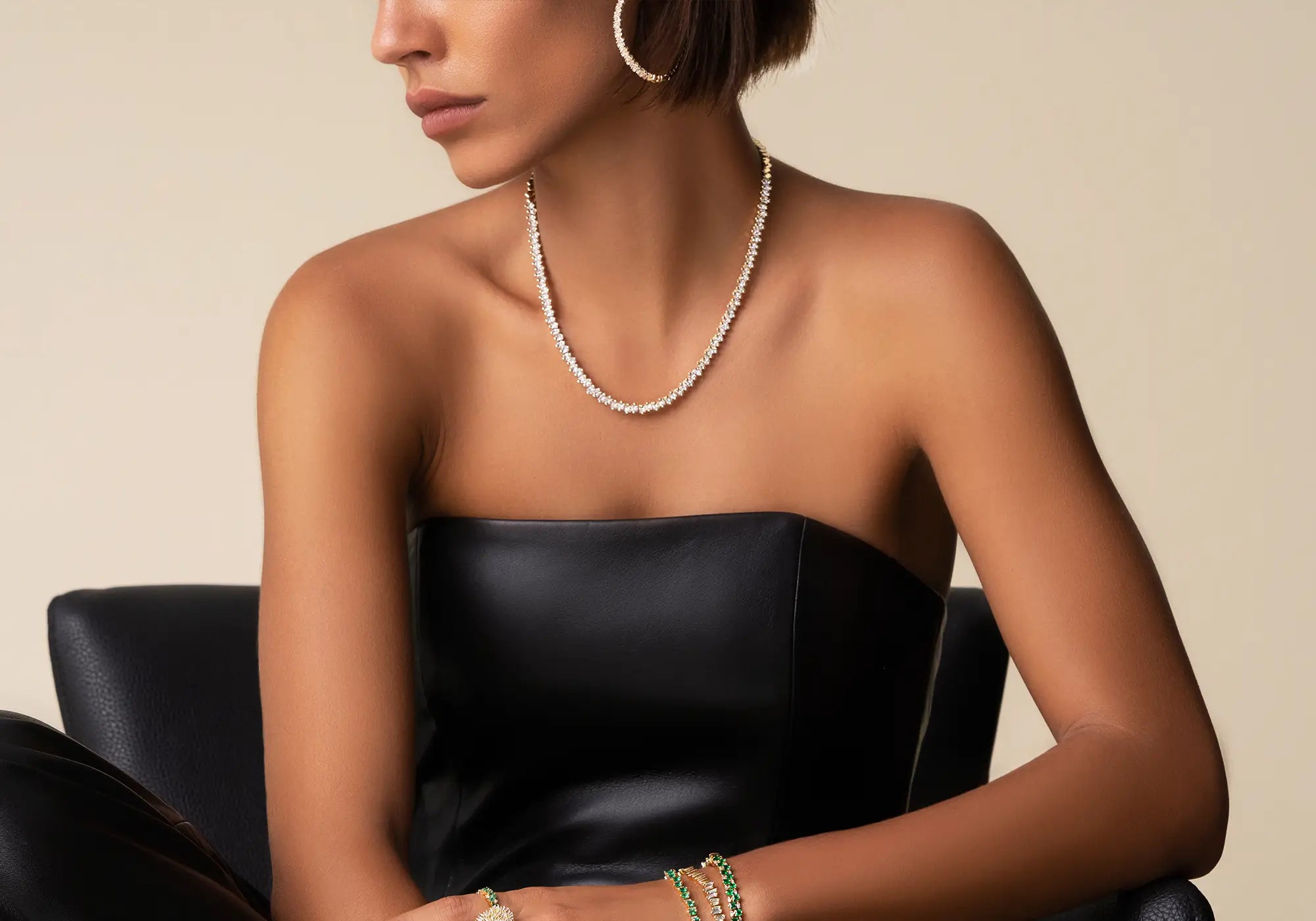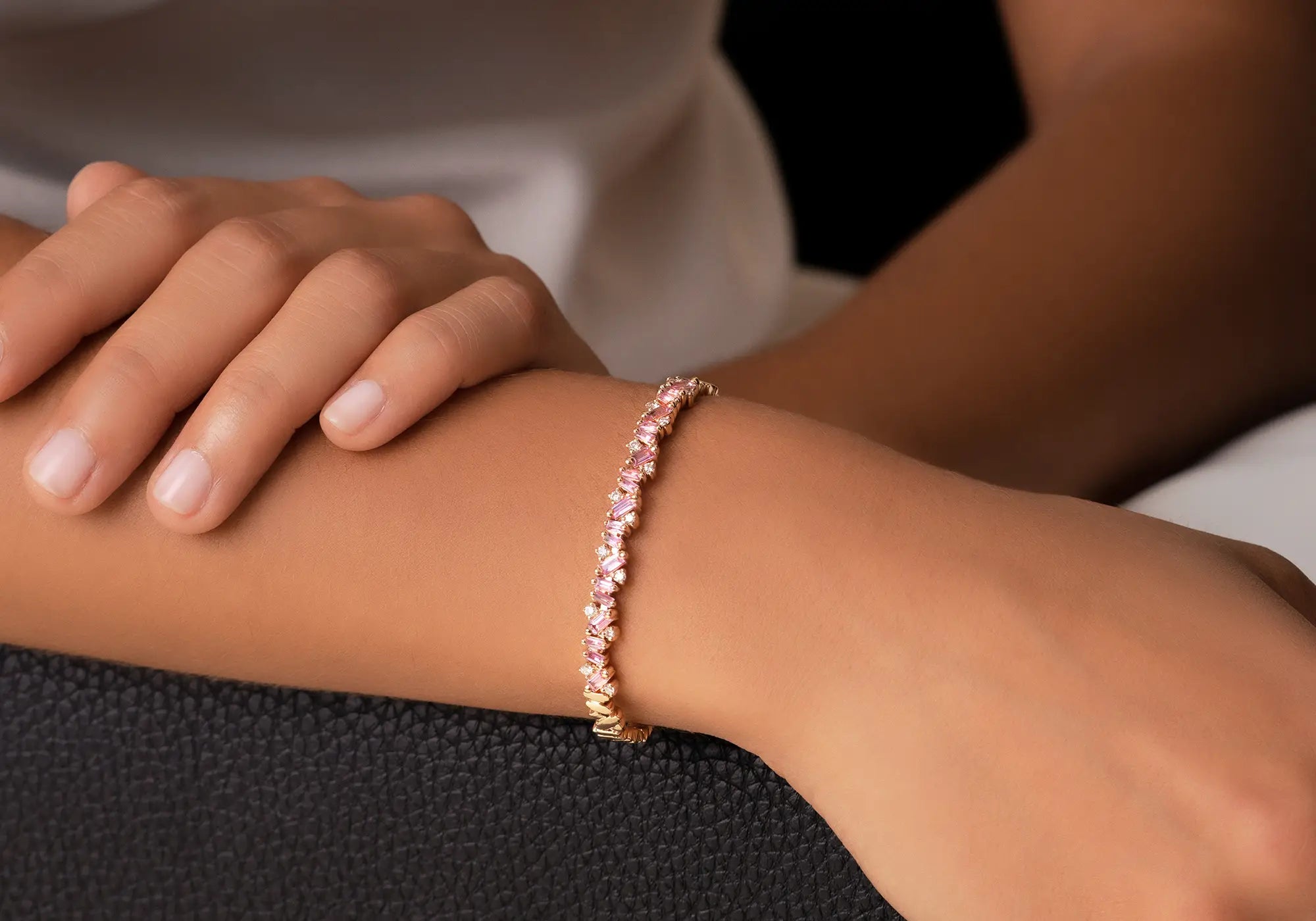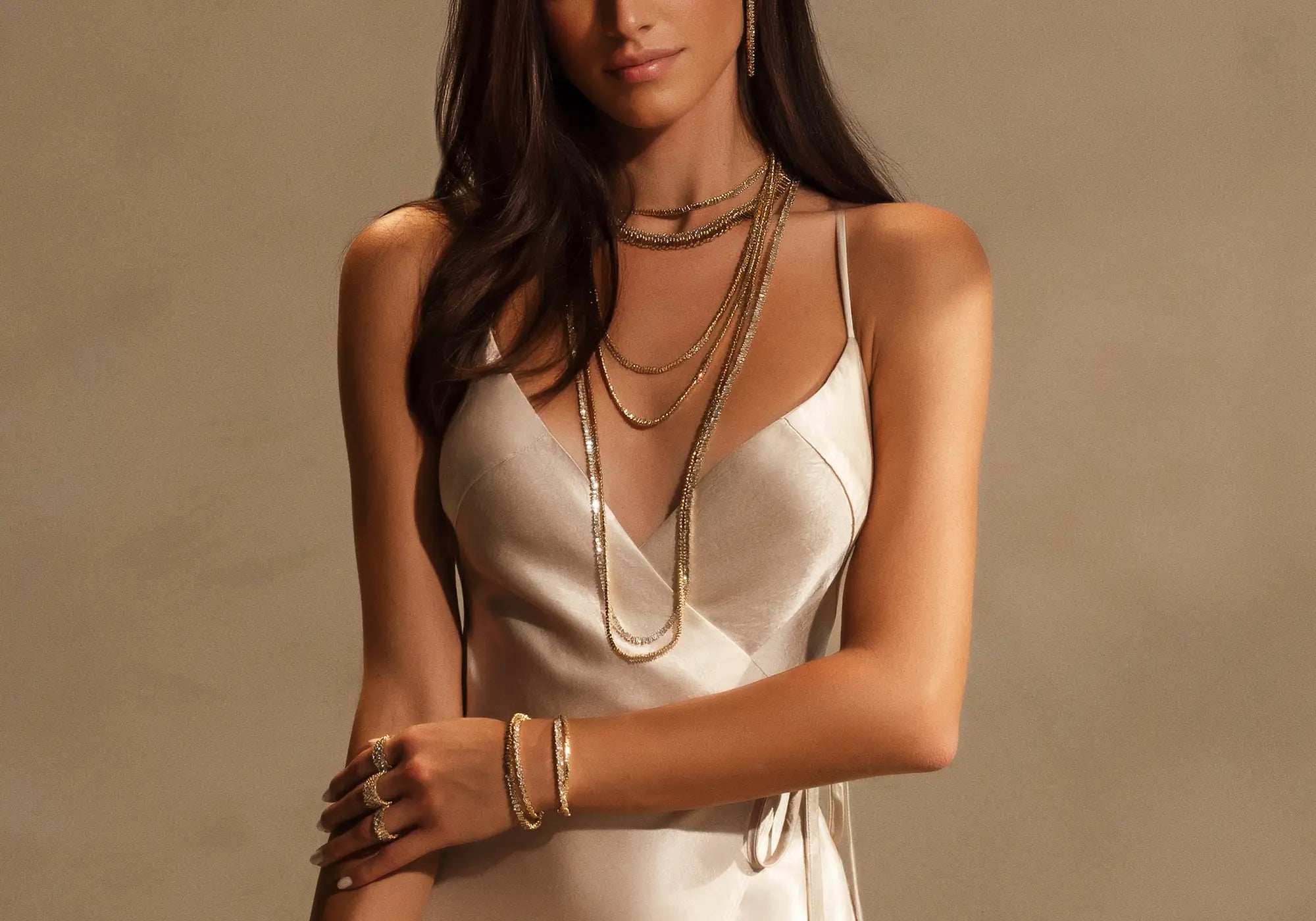What You Need to Know About Princess Cut Stones [Guide]
While round, cushion, and radiant cut stones earn the lion’s share of press and popularity, it’s important to keep in mind that there are countless other cuts out there, many of which don’t get half the credit or coverage they deserve.
Case in point, princess cut stones, which offer a great deal of aesthetic appeal in a relatively unsuspecting package. In this short guide, let’s get into some of the details defining princess cut stones and what makes them unique.
Our collection of fine jewelry contains many examples of peerless princess cut stones, ranging from princess cut tennis bracelets to rings and much more. Here’s what you need to know about this unique cut.
What Is the Princess Cut?
The princess cut is a fancy cut with a square profile that is among the most brilliant of all “square” stone cuts. This cut was “invented” by legendary lapidarist Israel “Izzy” Itzkowitz in 1979 by adapting the faceting arrangement of the brilliant cut to a square stone.
Stones with this unique cut are sometimes referred to as “square modified brilliant” or “rectangular modified brilliant” cut stones.
The princess cut is also one of the cuts that can potentially exhibit some variability. It can have between 50 and 58 facets, depending on the stone itself.
Unlike other cuts - like the round cut - there is no single standard for princess cut stones. That said, most princess cut stones are fairly similar according to the following metrics
All princess cut stones feature a crown - that is, the uppermost facet of the stone - which is typically accented with either French corners or bezels.
The pavilion of the princess cut stone (the lowermost surface) is cut with chevron facets which are responsible for producing the stone’s brilliance. Princess cut stones have anywhere from two to four chevron cuts.
Stones with two chevron cuts on the pavilion will throw brighter flashes of light; those with four will scintillate more; three chevrons offer a balance between these two.
Why Is the Princess Cut Popular?
There are quite a few reasons that the princess cut is popular - both among consumers and lapidaries.
For one, take an octahedral stone - a shape in which rough diamonds often occur naturally. Cut that diamond down the middle, and you already have basically two roughly princess cut stones. So it’s relatively easy to produce a princess cut stone.
Another reason that princess cut stones are popular has to do with economy. It is easier to produce larger-carat stones in a princess cut (from a rough stone) than it is to produce larger-carat stones in round cuts. That is, you get more gem for the money with a princess cut.
Even with a smaller stone (in terms of raw carat size) a square cut will often appear larger than a categorically larger round cut stone, thanks to its unique shape.
The princess cut also showcases exceptional brilliance, and in fact, is the most brilliant of all the “square” cuts. While they’re not as brilliant as a flawless, round-cut stone, no other fancy cut can match them, and moreover, the unique, atypical style is attractive to some buyers.
To others, the princess cut is a refreshing, contemporary cut that is appealing specifically due to its novelty. Though it is popular, it has not been around nearly as long as cabochons, brilliant cut stones, or even as long as similarly-contemporary baguette cut stones, which hail from the 1920s or 1930s.
The princess cut is uniquely contemporary and definitely enjoys some popularity because of it.
The Princess Cut: Brilliance and Apparent Size
Thanks to their unique shape, princess cut stones often appear larger than stones in other typical cuts, thanks to their sharp corners and unique geometry.
As stated, they also produce excellent brilliance, all things considered. It is important to note that the depth percentage of a stone will affect its fire and brilliance, though.
If a stone is either too shallow or too deep, light will not properly enter the stone and reflect back to the viewer’s eye as desired. This can result in a stone looking dimmer than it should.
Most lapidaries agree that the ideal depth percentage for a princess cut stone is between 65% and 75%, with most also agreeing that keeping the number below 75% is a safe bet.
Also, keep the length to width ratio in mind. The ideal stone will have a 1:1 ratio, with any noticeable imbalance causing the stone to appear rectangular instead of
symmetrically square.
Princess Cut Stones: Setting Considerations
One more thing to consider with princess cut stones is the setting. Since these stones have sharp extremities at their corners, they can snag on clothing and potentially be chipped.
Because of this, channel and prong settings are ideal for princess cut stones because they provide the best protection to the corners of the stone.
Peerless Princess Cut Tennis Bracelets, Rings, and More
Suzanne Kalan is home to a wide range of princess cut tennis bracelet's, rings, earrings and other unique, unforgettable, one-of-a-kind designs.
Take a look through our collection and get in touch with our customer care specialists at 818-812-9217 for assistance in selecting the perfect gift.




Leave a comment
This site is protected by hCaptcha and the hCaptcha Privacy Policy and Terms of Service apply.